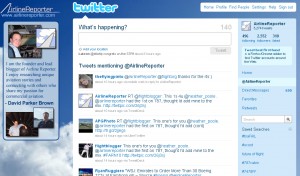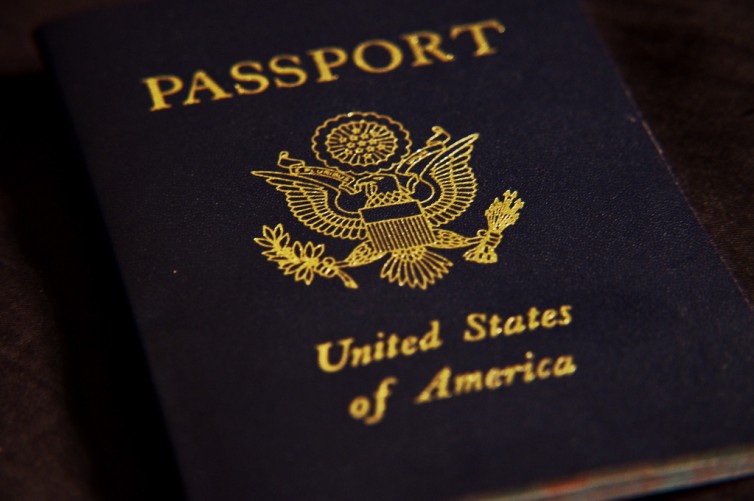I have a dirty little secret to share. I made it around the sun 30 times before stopping to pick up a passport. For most of my adult life I could easily explain this away: “My airline doesn’t fly internationally.” Then came the May of 2011 announcement that Southwest would acquire AirTran, and as a result would become an international carrier. Fast forward a few years and AirTran had been fully integrated into Southwest, yet I was still without a magic blue book. What seemed to be my last valid excuse (aside from pure laziness) was gone. It was time to join the majority of my AvGeek brethren (and 35% of the U.S. population) in securing a passport.
BONUS: Photo Tour of Hobby’s New International Terminal
At a dinner with fellow AvGeeks, a friend of mine who recently interned with an airline in Chicago mentioned that he had applied for, and received, a same-day passport in downtown Chicago just hours before he took his first non-rev trip abroad. I was intrigued. I had discovered a way to make a task I had put off for years more interesting than filling out paperwork and sitting around for weeks waiting for a response. Not only that, I now had a completely valid excuse to board a LUV bird to jet up to Chicago for a day trip. I was fully on board for a same-day passport challenge.

Mockup of how Southwest’s new seats will appear on the 737 MAX 8 aircraft – Image: Southwest Airlines
I recently flew Southwest Airlines for the first time in a while. I love the airline, I love what they have done for domestic air travel in the US, and I love so many of the people who work there. But I do also LUV having a seat assignment — which you cannot get with Southwest. I feel there is much added stress having to check-in early, making sure you are in the right place in line at the gate, and the worst of all: not knowing where you will sit. However, I have spoken to so many huge fans of Southwest, that actually like the process (mainly my dad and JL).
If you have flown Southwest Airlines before, you probably know the drill. When you check in, beginning 24-hours before the flight, you will be given a letter (A, B, or C) followed by a number between 1 and 60. A1 boards first, followed by the rest of the A group in numerical order. The process is repeated for the B and C groups. While the first fifteen seats are generally reserved for premium fare classes, frequent fliers, and paid upgrades, most positions are assigned in order of check-in time. End up in the C group, you will likely get a center seat (easy to remember – C for Center).

Boeing Field in 2005
King County International Airport, or Boeing Field (BFI) as it is commonly known, is the largest business and general aviation airport in the Seattle area. If you are flying your Gulfstream or Challenger in to Seattle, this is the place you are likely going to be landing.

The line up of brand new Boeing 737s at BFI – Photo: Bernie Leighton
There are a few scheduled services in and out of this airport, which include Kenmore Air Express and cargo flights with UPS & DHL (FedEx is based at SeaTac). The major traffic at this airport comes from general aviation, business jets via the Fixed Base Operators (FBOs), and Boeing test flights.
Because of this diversity, BFI is a great place to go aircraft spotting.

My Twitter page, where all the action happens!
I know I talk about Twitter on my blog quite a bit. I get a mixed-bag reaction from people about what Twitter is and how it works. I use it a lot and link to quite a few interesting stories and photos that I do not share on my blog or on my Facebook.
For those who haven’t stepped into the world of Twitter or maybe you have, but got confused with all the Twitter talk, let me try to help. If you have absolutely no interest in Twitter or learning about it, go ahead and skip this blog.
So what is Twitter? Well, it depends on who you are and what you use it for. If you have a personal Twitter, you probably are going to use it differently than a business one. I use my Twitter to #1 share interesting stories I find that I might not blog about #2 Let you know real-time what I am doing, if I am doing an aviation-related event #3 Connect with airlines, others who write in aviation, and my readers in a way I cannot do with other mediums. If you use Facebook, Twitter is a lot like your status updates. If you don’t use Facebook, Twitter is like a blog and instant messaging that mated and had kids. If you don’t know what blogs or instant messages are, I don’t think I can help :).
The fun part is, unlike blogs or Facebook status updates, you only have 140 characters to make your point, so long-winded folks need not apply.
If you have tried out Twitter you might quickly get confused with all the @ and #’s you see everywhere. It took me a while to get used to it, but after a little practice, it works. I will just keep this simple as if you are just trying to read my and other people’s Twitter feeds.
THE @ SYMBOL:
This is used before a user name to talk about or to someone. I am @AirlineReporter on Twitter. Let’s say you see me Tweet: “hey @danwebbage, I enjoyed meeting you the other day.” That means I am talking to Dan Webb on his Twitter account. He is able to see any message that someone mentions him in and even though I am talking to him, you can still see the message. Let’s say you found this cool airline story and want to share it with me. You could be like, “@AirlineReporter I found this cool, story, what do you think? www.coolstory.com?”
THE # SYMBOL:
The hash sign represents a topic. So let’s take the Farnborough Air Show happening soon as an example. Anyone talking about that topic will put a #FARN10, so if you want to see what anyone is saying about it, you can look it up. For example, recently I did the Virgin America new flight from San Fransisco to Toronto. Anyone who was talking about that experience used #VXToronto.
THE RT:
You probably see “RT” a lot too. This stands for “Re-Tweet” and is when someone copies someone else’s origional message. Let’s say Mary Kirby (@RunwayGirl) just wrote something on her blog and Tweets about it. “Hey check out my cool new blog on in-flight entertainment.” If I like what she is saying and want my readers to see what she is saying, I can RT or repeat what she is saying. It would then look like this, “RT: @RunwayGirl Hey check out my cool new blog on in-flight entertainment.” So you know the original message was done by Mary, but I repeated it. Now if someone then RT’s my Tweet, it can get complicated and look like this, “RT: @AirlineReporter RT: @RunwayGirl Hey check out my cool new blog on in-flight entertainment. ” Someone doing the RT can also make comments. Remember that cool story you Tweeted to me earlier? Let’s say I want to share that with my readers and I RT it with a comment, like this, “Awesome! RT @YouTwitterName: @AirlineReporter I found this cool, story, what do you think? www.coolstory.com?” Don’t worry if it is starting to sound confusing. With a little playing around, you will get the hang of it!
You do not need to create an account to read Twitter, but it sure helps. By creating an account, you are able to add people that interest you onto your friend’s list (that is my friend’s list) and see what they are Tweeting. When you get a little practice you can create groups. Like I created a group of airlines on Twitter that I will look at to see what they are Tweeting about. If you do create an account, it can be totally anonymous, all of Twitter can be anonymous if you want. You decide what information you let people know about.
It is ok if it is confusing at first. It took me a few months to get the hang of it and longer than that before I even know what the #-tag was for. After a while you get used to it and really use it as a resource to see what is going on in the world and connect to people and companies in ways you never have before. You can read about your Aunt Frannie feeding her cat and even hear about awesome travel deals, all in one spot. And I will tell you what…if you run into trouble or have any questions, go ahead and ask me and I will see if I can help you out!
Ok, if you will excuse me, I need to Tweet about this blog now!
To learn more try these out:
* About Twitter page
* The wiki article on Twitter really helps
* Video showing how using Twitter for personal use works




